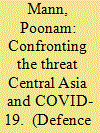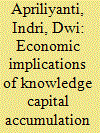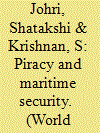| Srl | Item |
| 1 |
ID:
113595


|
|
|
| 2 |
ID:
127257


|
|
|
|
|
| Publication |
2014.
|
| Summary/Abstract |
Combined Heat and Power (CHP) has been proven as a mature technology that can benefit both building owners and utility operators. As the economic and environmental benefits of CHP in urban centers gain recognition, regulations and policies have evolved to encourage their deployment. However, the question remains whether these policies are sufficient in helping to achieve the larger sustainability goals, such as the New York City-specific goal of incorporating 800 MW of distributed generation. In this paper, the current regulatory and policy environment for CHP is discussed. Then, an engineering analysis estimating the potential for CHP in NYC at the individual building and microgrid scale, considered a city block, is performed. This analysis indicates that over 800 MW of individual building CHP systems would qualify for the current incentives but many systems would need to undergo more cumbersome air permitting processes reducing the viable capacity to 360 MW. In addition microgrid CHP systems with multiple owners could contribute to meeting the goal even after considering air permits; however, these systems may incorporate many residential customers. The regulatory framework for microgrids with multiple owners and especially residential customers is particularly uncertain therefore additional policies would be needed to facilitate their development.
|
|
|
|
|
|
|
|
|
|
|
|
|
|
|
|
| 3 |
ID:
174869


|
|
|
| 4 |
ID:
133564


|
|
|
|
|
| Publication |
2014.
|
| Summary/Abstract |
Reviewing the experiences of japan, this paper analyzes factors that determine and shape the output generation. This article seeks to apply the Cobb Douglas production function, which is to analyze the contribution of each input in a set of combined factor inputs, by examining which factor input amongst research activities, labor or capital has a larger influence on output. The dynamic of output is measured in integrated factors, and the progress in understanding the output source will improve the computation of Cobb Douglas production function, which is the objective of this study. Data obtained from Research Institute of Economy, Trade and Industry (RII.*l'I'I) japan Industrial Productivity GIP) Database 2011 and Japan Statistics Official in the period of 1970 to 2008 are used to test the hypotheses. Multiple regression method was conducted. The ?ndings of this study provide substantial lessons for Indonesia, particularly with regards to the improvement of the industrial policy regarding innovation and technology.
|
|
|
|
|
|
|
|
|
|
|
|
|
|
|
|
| 5 |
ID:
169666


|
|
|
|
|
| Summary/Abstract |
While many people regard piracy as something daring and magical, as depicted in Hollywood movies, the reality is that piracy is a real and evergrowing threat to seafarers in many maritime arenas. One of the most important but least understood impacts of piracy is its financial cost and it is a critical maritime security threat in the world. While in ancient times, the main drivers of piracy were raiding for plunder and capture of slaves, in the modern era, economic, military, political and even technological developments have drastically altered its character. There are diverse motives behind modern day piracy ranging from economic gains through ransoms to political advantages and even terrorism. States have taken steps at the international as well as regional level to combat piracy including through legal frameworks. This paper examines the adequacy of the measures and discusses the current challenges to the implementation of anti-piracy norms.
|
|
|
|
|
|
|
|
|
|
|
|
|
|
|
|